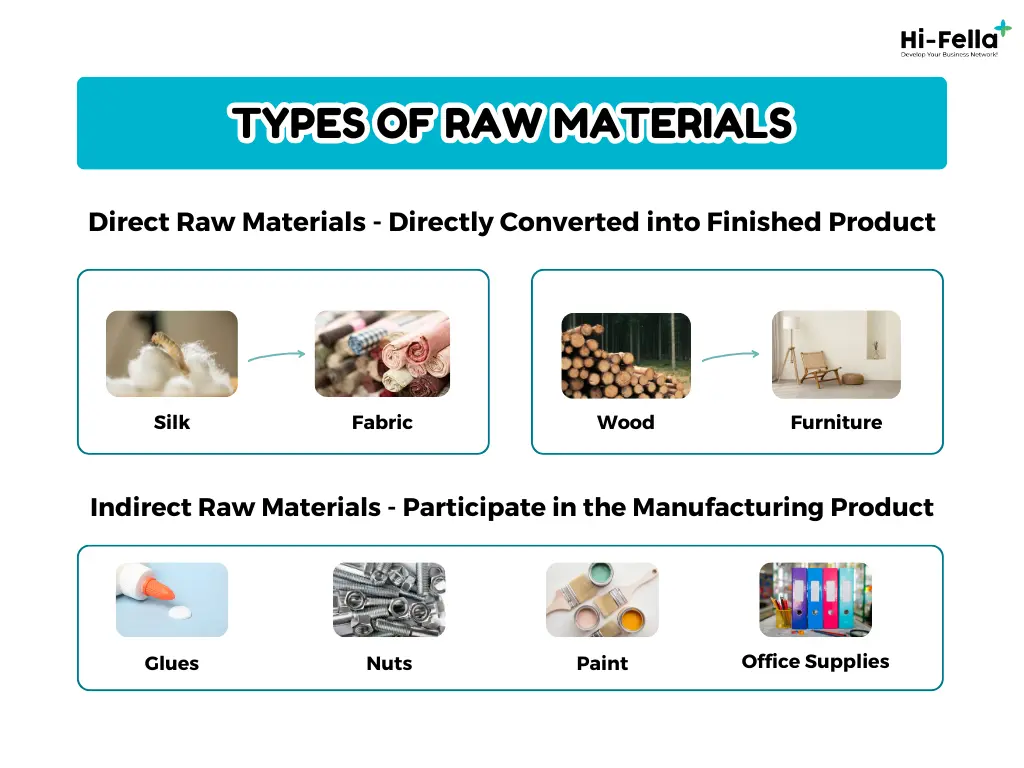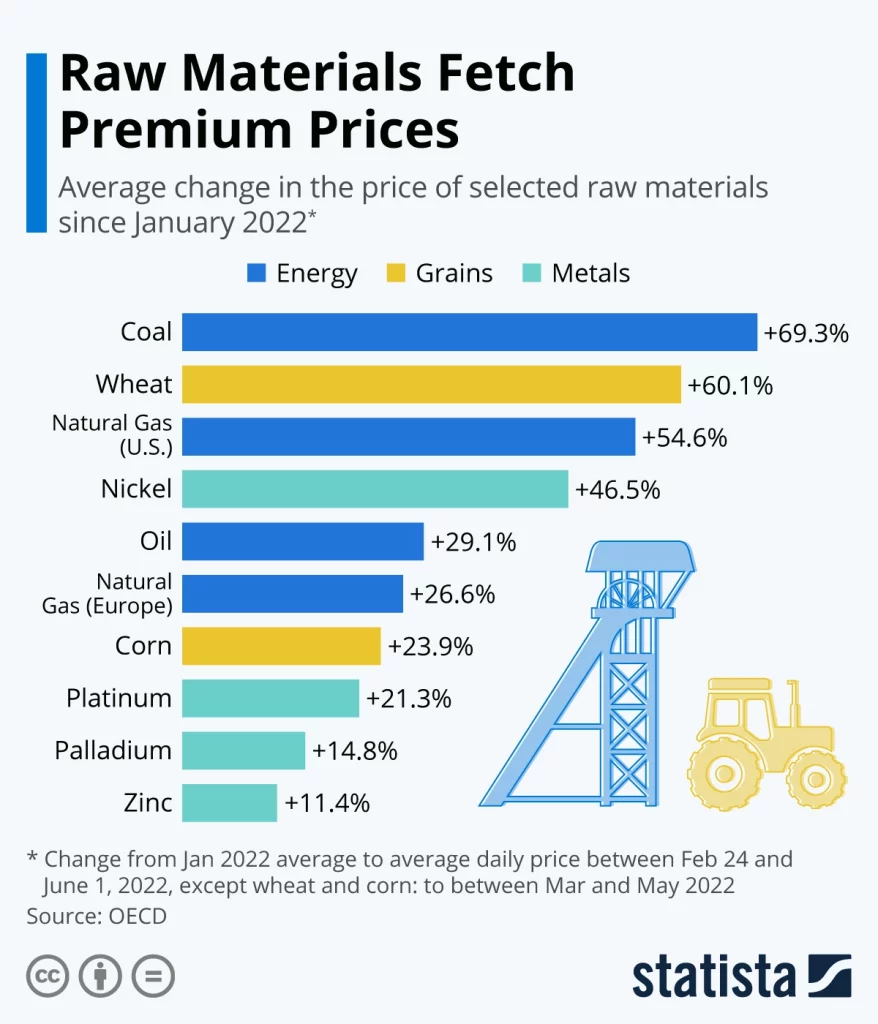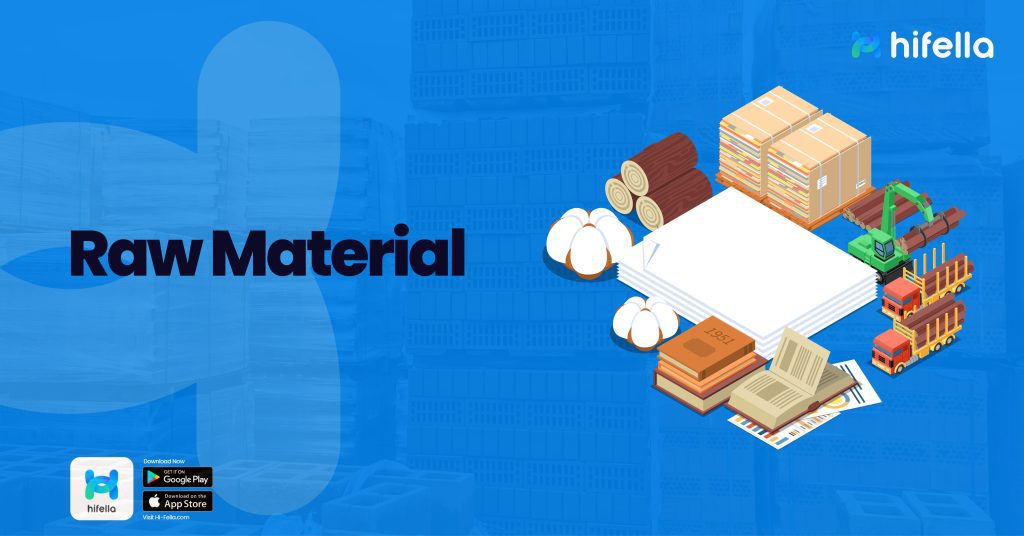Table of Contents
Raw materials are one of the most important resources in the manufacturing world, serving as the basic elements from which all goods and products are made.
From the steel in our cars to the cotton in our clothes, these materials are the starting point of many of the items we use on a daily basis.
But what exactly are raw materials, and why are they so important to various industries? This article aims to shed light on these questions, providing a thorough understanding of raw materials and their essential role in the global economy.
Definition of Raw Materials
At their core, raw materials are basic materials in their natural, modified, or semi-finished state, which are used in the production of goods and services.
According to Investopedia, raw materials are the basic substances used to make products. They are bought and sold around the world on markets called commodity exchanges.
Raw materials are extracted from the earth, harvested from agricultural fields, or recovered through recycling processes. Raw materials can be found in many forms, including metals, minerals, oil, natural gas, plants, and animals.
The journey of raw material begins at its source – be it a mine, farm, or recycling facility – and continues through various processes until it becomes part of the finished product.
Types and Categories of Raw Materials

Understanding the diversity of raw materials is essential to understanding their importance. They can be broadly categorized into two groups:
1. Direct Raw Materials
These materials are an integral part of the final product. For example, wood used in furniture manufacturing, cotton in textiles, and steel in automobile manufacturing are direct materials.
Such materials are directly traceable to the product and constitute a significant part of the production cost.
2. Indirect Materials
Unlike direct materials, indirect materials do not become part of the finished product. Indirect materials assist in the production process.
Examples include lubricants for machinery, adhesives, and cleaning supplies. While they may not be part of the final product, their role in making sure the production process runs smoothly is quite necessary.
The Critical Role of Raw Materials in Industries

Source: SKP PTE LTD
Raw materials are the backbone of the global economy, powering industries and supporting livelihoods.
The availability, cost and quality of raw materials are critical to the success of manufacturing sectors around the world.
1. Economic Impact and Industrial Significance
The importance of raw materials extends beyond the production line. Raw materials affect the price, quality and availability of goods.
In sectors such as construction, automotive, electronics and pharmaceuticals, the demand for high-quality raw materials is endless.
These industries rely on a steady supply of raw materials to maintain production efficiency and product quality.
2. Sustainability and Innovation
As the world moves towards sustainability, the focus on raw materials is increasing. Industries are looking for innovative ways to source, utilize, and recycle raw materials to minimize environmental impact.
This shift towards sustainable practices is not only a response to environmental concerns but also a strategic move to ensure long-term supply stability in the face of dwindling natural resources.
Sourcing Raw Materials: Challenges and Strategies
Raw material procurement is a complex process influenced by geographical, political and environmental factors. Raw material procurement methods vary widely, from mining and extraction to agriculture and recycling.
1. Global Supply Chains and Sourcing Methods
The global nature of supply chains adds a layer of complexity to raw material procurement. Companies must figure out how to negotiate international markets, geopolitical tensions, and fluctuating prices to get the materials they need.
Strategies for sourcing raw materials include long-term contracts with suppliers, investment in sustainable sourcing practices, and diversification of supply sources to reduce risk.
2. The Future of Raw Material Sourcing
Innovation in sourcing is essential to address the challenges of sustainability, supply chain resilience, and cost management.
Technological advances, such as blockchain for traceability and artificial intelligence for supply chain optimization, are changing the way companies source raw materials.
In addition, the push for a circular economy is encouraging industries to rethink waste and recycling as integral components of raw material sourcing.
3. Sourcing Raw Materials in the Middle of the Ukraine Crisis
The war in Ukraine has had a significant impact on global prices, especially as Russia and Ukraine are major suppliers of key resources such as oil, gas, wheat and metals.
According to the OECD Economic Outlook, these countries contribute heavily to global exports of these commodities, which has led to sharp price increases and supply disruptions since the conflict began.
Price spikes for commodity essentials such as coal, wheat, gas, oil, nickel, and platinum have ranged from 21% to 70%.
These changes pose major challenges around the world, especially in developing countries that depend on these imports, as is the case in Somalia.

Source: Statista
The Evolving World of Raw Materials
Raw materials are more than just inputs for production-they are the life source of industries, economies, and global markets.
The importance of raw materials spans economic, environmental and technological spheres, affecting everything from local manufacturing processes to global supply chains.
As we continue to explore the challenges and opportunities presented by raw materials, our understanding and approach to sourcing, sustainability and innovation will undoubtedly evolve, shaping the future of the industry and the world at large.
Understanding raw materials is just the beginning. By studying their types, importance and strategies for obtaining them, we gain insight into the complexity of the modern industrial ecosystem.









